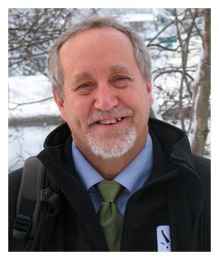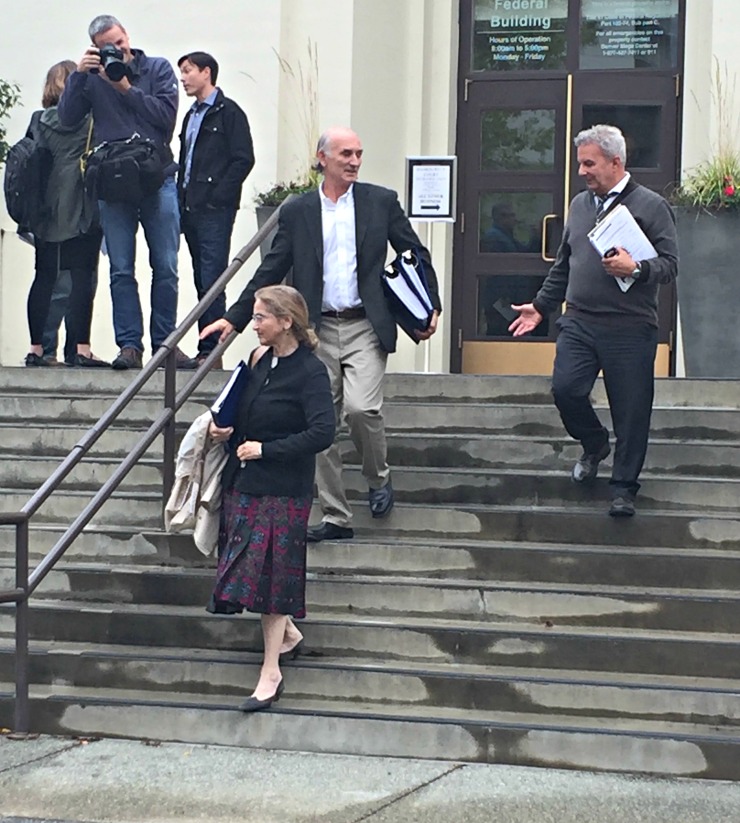The financial officer for the Dispatch spelled it out for the bankruptcy judge: If no sale happened today, the Dispatch would have less than $500 in its bank account on Friday — and would owe some $360,000 in payroll next week.
Judge Gary Spraker decided that the $1 million offered by the Fairbanks-based Binkley Company would have to do, especially since there were no other bidders for the newspaper. That $1 million came as a loan last month and every penny has been spent paying back bills and operating costs.
Alice Rogoff, the owner of the paper, was asked if she thought it was a fair price. No, she said, looking frail in her chair facing the judge. But it was the only offer she received.
In fairness, it was a lot more than she was offered by the Binkleys back in June, when they took a look at the newspaper and offered her one dollar.
The unsecured creditors objected. Through their attorney, they made the case that their livelihoods were just as important as the employees of the newspaper. But in the end, the judge decided the best of a bad situation was to keep the paper alive, and not part it out.
Without the sale today, operations would end this week.
Ryan Binkley, Kai Binkley Sims, Wade Binkley, and James Binkley make up the Binkley Co.; they are partnering with Jason Evans, who owns Alaska Media LLC. That includes the Dutch Harbor Fisherman/Bristol Bay Times and Homer Tribune. Ryan and Evans are new co-publishers, or will be after the deal closes later this week.
The courtroom in the old federal building downtown filled up early before the 9:30 a.m. auction. About 50 attended and were quiet as the owner Alice Rogoff walked into the courtroom. A court sketch artist for a news group sat in one corner. Many in the room were employees and former employees of the Dispatch, and others attending were simply owed money by Rogoff. Some had their attorneys with them.
Altogether, the room represented over $12 million in payments that Rogoff simply hasn’t made. Most in the room will probably not be made whole.
Rogoff filed for Chapter 11 bankruptcy last month, and the Binkley Co. loaned the newspaper $1 million to keep it going until a sale could be accomplished. Now, what remains of the assets after the sale will go into Chapter 7 — liquidation.
Ryan Binkley was born and raised in Fairbanks, and is married to Sabrina Binkley. They have two sons.
The Binkley family’s steamboating tradition goes back over 100 years and five generations. According to the Riverboat Discovery web site, in 1898, Charles M. Binkley hiked the Chilkoot Pass as a stampeder, but was more interested in building and operating boats on the Yukon than in the gold in the hills.
His son, Captain Jim Binkley, Sr., followed in his father’s footsteps and piloted freight vessels on the Yukon and Tanana Rivers in the 1940s. As transportation systems added rail and air service, Jim and his wife Mary began river excursions, and grew a thriving tourism-based business in Fairbanks.
That business continues as a family enterprise today.
On Aug. 13, when the Binkleys made their offer to salvage what was left of the Dispatch, Ryan Binkley and Jason Evans penned this note to readers:
This weekend we made a bold first step to ensure the future of the Alaska Dispatch News going forward. At the same time the paper has filed for bankruptcy protection, we’ve entered an agreement to purchase the ADN and immediately take control of the operations of the paper, beginning Sunday.
We are a group of lifelong Alaskans who have come together to save the ADN during this interim time. Our group is led by Ryan Binkley and Jason Evans.
Ryan Binkley was born in Fairbanks and has lived around the state his whole life. He is a fourth-generation riverboat captain who has led his family business in Fairbanks, The Riverboat Discovery and Gold Dredge 8, for the last 11 years.
Jason Evans was born and raised in Nome, is Inupiaq Eskimo, and has also lived in the state his whole life. He is the president of Rural Energy Enterprises, has experience on numerous boards and is the owner of Alaska Media LLC, which owns three newspapers in rural Alaska.
Newspapers across the country are in distress and operating independently in remote Alaska adds to the challenge. We will be working with the talented and dedicated team here at the company, building a winning organization.
The ADN can’t be allowed to go away. It’s too important to the city of Anchorage and to the State of Alaska. Alaska deserves and needs a robust and healthy paper of record as much as it needs any other public utility or infrastructure, particularly in these uncertain times. We grew up reading the ADN and our actions are intended to ensure that our grandchildren can do the same.
Serving the loyal employees, readers and advertisers who depend on the ADN is our highest priority. The ADN depends on you as well, and your support is its greatest asset moving forward.
The ADN will continue its commitment to publish important and relevant news that our readers expect. The people of Alaska and Anchorage will have an award-winning statewide newspaper and we’re committed to building an institution that ensures its future.
Tonight, the new co-publishers, Ryan Binkley and Jason Evans, published this note to readers:
To our readers,
A month ago we committed to loan the ADN up to $1 million for it to continue producing the high-quality journalistic product that the people of Anchorage and Alaska expect. We also hoped that we would be able to purchase the assets of the ADN out of bankruptcy and become the new owners. On Monday a federal bankruptcy court approved the sale effectively transferring ownership.
As the new owners we’ve taken on an obligation to the employees, advertisers and readers that we don’t take lightly. The sale paves the way for a new era at the ADN as we chart our own course.
The ADN is not going away. As owners we vow to do whatever it takes to set Alaska’s paper of record onto a strong foundation that will last for generations. There has been much talk in the last month about the liabilities of the ADN, but not much talk about its greatest asset: the trust and faith of this community.
To our readers we say thank you. Thanks for sticking with us during this uncertain time, thanks for your encouragement and support over the last month, and thanks for your continued support of this vital community institution going forward.
If this last month has taught us anything, it’s how much this newspaper means to the people of Anchorage and Alaska and we promise that with your support it will continue to live up to the standards of professionalism and excellence that you deserve.
Ryan Binkley and Jason Evans are co-publishers of Alaska Dispatch News.


